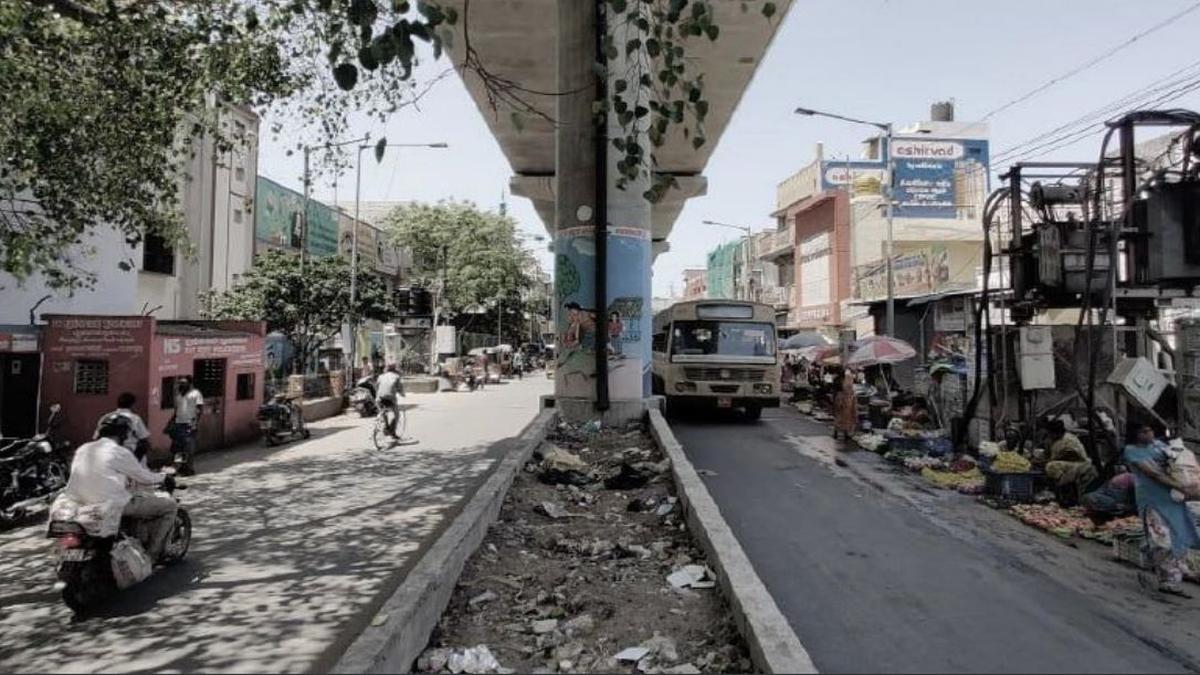
Chennai’s Tiruvottiyur High Road set for major revamp
The Hindu
The Greater Chennai Corporation (GCC) is planning to renovate a 1.2 km stretch of the Tiruvottiyur High Road under the Special Projects Department, by adding several features.
The Greater Chennai Corporation (GCC) is planning to renovate a 1.2 km stretch of the Tiruvottiyur High Road under the Special Projects Department, by adding several features.
The 10 km arterial road connects the Manali High Road and Washermanpet railway station. Earlier, a 2.4 km of the stretch was restored after stormwater drain construction by the Corporation last year.
The latest project is planned under the Sustainable Urban Services Program (SUSP), at a cost of ₹36 crore. Administrative sanction was obtained, and the project has been tendered out for implementation, civic officials said.
Parking spaces below the flyover between the pillars, designated zones for school crossings, pavements, and stormwater drain links have been planned. Greenery, such as vertical gardens watered through drip irrigation, similar to the ones placed under the flyovers on Cathedral Road and across Chamiers Road are also coming up.
Further, in phase II of the SUSP implementation, a further 1.8 km of the road will be improved, with parks, traffic islands, green zones, bollards, footpaths and better streetlights.
This proposal was presented during a two-day workshop by conducted by the Institute for Transportation and Development Policy (ITDP) in May for officials and engineers of the GCC.
At present, debris has been dumped under the flyover between the medians, there is irregular parking and there are no pavements on the road, the presentation revealed.

After a long, tiring day all we want is to jump right on our cosy beds and rest comfortably on our soft, fluffy pillows, right? Pillows are not quite appreciated as much as electric cars or air-fryers, for instance. Pillows are a wonderful man-made creation that has improved the lives and sleep of people across the globe. Did you know ages ago people used to rest their heads on a HARD ROCK? So how did humans go from sleeping on stones to cosy, fluffy and soft pillows today? Let’s get into the origin of your everyday pillows!

As the November 30 deadline nears for installing vehicle location tracking devices (VLTD) and emergency panic buttons in public service and nationally permitted goods vehicles in Karnataka, transport unions representing cab, bus, and truck operators are urging the government to reconsider the mandate. They argue that the high cost of these devices and a lack of awareness have made it difficult for many vehicle owners to comply with the requirement.









